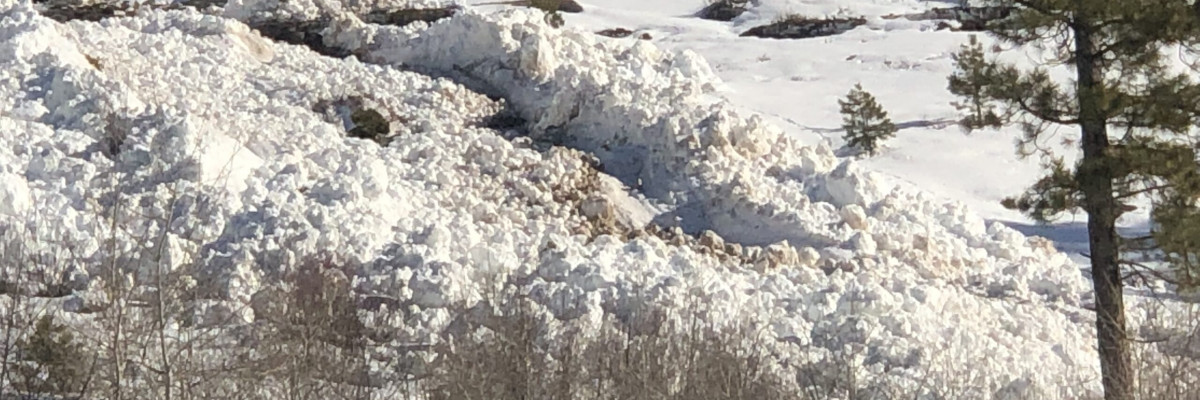The avalanche danger for the West Central Montana backcountry remains MODERATE. Small loose wet avalanches are likely on sun-exposed terrain with potential for larger slides in extreme terrain. Larger dry avalanches are possible in isolated terrain and warrant careful evaluation of the snowpack before committing to avalanche terrain.
Good morning, this is Logan King with the West Central Montana Avalanche Center’s avalanche advisory for Thursday, March 21st, 2019. This danger rating does not apply to operating ski areas, expires at midnight tonight and is the sole responsibility of the U.S. Forest Service.
Weather and Snowpack
Mountain temperatures again this morning at most locations are just below freezing. No new snow has been seen for nearly a week and winds are light out of the E in the northern portion of the forecast area. Stronger winds can be found in the Southern Bitterroot from the SSE at 12 mph with gusts up to 17 mph.
Loose wet avalanches are likely throughout the forecast area. Avalanche activity will increase through the day and will be concentrated on the southern half of the compass. Loose wet slides are primarily small but can be hazardous if terrain traps are present. Yesterday we found a handful of loose wet slides (Pic) that were able to entrain large amounts of snow (Video1). Again most loose wets will be small but be aware that in big steep terrain they have the potential to be large and destructive (video2). Warm temperatures are also resulting in cornices loosing strength and the formation of glide cracks. Give both a wide berth because they can be unpredictable and present another complex and hard to predict hazard.
The next hazard is persistent slabs. We again found depth hoar yesterday that easily propagated in stability tests in areas with shallow snow (profile). The weak faceted snow is gaining strength but is deep enough in the snowpack that the warm temperatures haven’t been able to accelerate the process, this means that this problem can linger for a while. The persistent slabs are very isolated and will not be found everywhere but will produce large avalanches if failures occur. Carefully assess the snowpack before committing to avalanche terrain because high consequences can be expected in any slide involving these weak layers near the ground.
Finally, isolated wind slabs can be found above 7,000 feet on cold or shaded aspects that have been wind-loaded (Pic). The lack of new snow and warm temperatures have slowed wind slab development and areas that have been loaded are gaining strength but the instability isn’t completely settled out yet. If you find yourself in soft snow, look for signs of wind loading before committing to steep terrain.
Avalanche and Weather Outlook
Warm and dry conditions will continue through Friday (forecast). Avalanche danger will continue to go through the daily cycle of a mid-day peak in activity before refreezing at night. Overall conditions will remain the same until this weekend when precipitation returns. Returning snow and rain will bump up avalanche hazard over the weekend.
If you get out into the backcountry, please share your observations on our public observation page.
Ski and ride safe.














